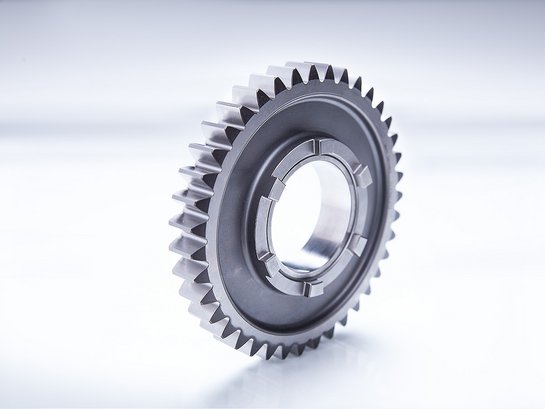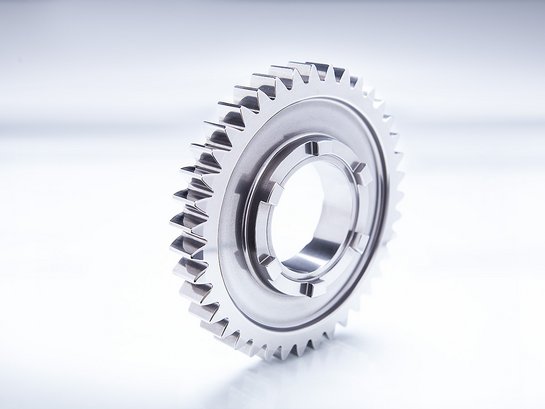lo shot peening, noto anche come sabbiatura a sfere o pallinatura controllata, aumenta la resistenza delle parti metalliche.


Questo processo offre numerosi vantaggi: lo shot peening (chiamato anche sabbiatura a sfere, trattamento di indurimento, compattazione o indurimento a freddo) prolunga la vita utile di una parte e ne aumenta la capacità di carico riducendo il peso. Chiude le micro cricche, riduce generalmente la tendenza alla corrosione e soprattutto alla corrosione da fatica e migliora l'affidabilità e la resistenza dei pezzi (ad esempio per molle, bielle, alberi a gomito).
Questa tecnica è adatta a tutte le superfici metalliche ed è uno dei processi di trattamento meccanico della superficie più importanti nell’industria. È particolarmente indispensabile in settori che richiedono altissimi standard di resistenza alla fatica e durata di parti che sono sempre sotto stress.
In modo quasi accessorio, durante lo shot peening, le parti vengono anche sbavate, decapate e liberate dalla ruggine grazie all'impatto continuo delle sfere (sabbiatura a sfere), ricevendo così una finitura superficiale completa. I pezzi tipici lavorati tramite shot peening o compattazione includono parti quali ingranaggi, alberi, componenti di trasmissione, molle, assi, bielle, valvole, alberi a gomito, oltre a componenti di sospensioni o pezzi strutturali di grandi dimensioni.
Cosa rende speciale la tecnologia shot peening di Rösler?
I nostri processi di shot peening si distinguono per un controllo minuzioso del processo, dettagli innovativi e componenti particolarmente duraturi. Tra le caratteristiche spiccano:
- Il controllo del flusso di abrasivo negli impianti ad aria compressa tramite sistemi magnetici o sistemi di dosaggio Coriolis, a seconda del tipo di abrasivo.
- Nella granigliatura a turbina si utilizza la valvola Rösler Power Line Valve per monitoraggio e regolazione.
- La raccolta, analisi, elaborazione e archiviazione automatica dei dati di processo tramite l’interfaccia HMI “PC Supervisor” garantiscono la massima costanza e sicurezza nei processi degli impianti ad aria compressa.
- Il circuito dell’abrasivo è dotato di sistemi di classificazione sofisticati, come la separazione ad aria ottimizzata o unità di setacciatura integrate per classificare la granulometria degli abrasivi.
- Controllo dei sistemi di trasporto dei pezzi.
- Turbine ad alte prestazioni RUTTEN Gamma con palette utilizzabili su entrambi i lati per una durata fino a 16 volte superiore, che garantiscono un processo di spruzzatura costante con minori regolazioni.
Cosa occorre sapere sullo shot peening: domande frequenti
Come funziona lo shot peening: formazione della superficie compattata
La forza si sviluppa sotto pressione: nel processo di shot peening (o pallinatura controllata) vengono proiettate a velocità elevata, particelle abrasive sferiche, appositamente selezionate in modo definito e riproducibile su superfici metalliche come ingranaggi, bielle, alberi a gomito ecc. L’impatto induce nella superficie e fino a una certa profondità delle tensioni residue di compressione, che aumentano significativamente la durata delle parti altamente sollecitate (ingranaggi, pale di turbina, bielle ecc.).
Questo processo somiglia alla forgiatura del metallo, ma invece che con un martello, la superficie viene colpita da un getto massiccio e ad alta velocità di sfere. Ogni granulo abrasivo provoca una piccola deformazione; queste micro-ammaccature insieme creano una superficie compattata con elevate tensioni residue di compressione.
Quali sono i vantaggi del shot peening?
La superficie o il materiale è più resistente dopo lo shot peening, meno soggetto a corrosione da fatica, ha una maggiore durata e una maggiore resistenza alla fatica (ad esempio per molle, bielle, alberi a gomito), insieme a molti altri benefici utili. Lo sviluppo della sabbiatura a sfere è stato fortemente guidato dall’industria aeronautica dagli anni 50 in poi. Oggi i vantaggi del shot peening sono indispensabili in molte industrie. Viene utilizzato per migliorare i componenti sottoposti a carichi estremi, come pale di turbina, componenti motore, bielle, sospensioni o parti strutturali. Questi pezzi sono protetti dalle rotture per fatica, il procedimento ottimizza il peso e rende le parti più resistenti allo stress continuo.
Anche i componenti aerospaziali sono sottoposti a pressioni e stress elevatissimi, quindi lo shot peening, che aumenta le tensioni residue di compressione, è un processo standard nel settore spaziale e viene impiegato per migliorare la struttura superficiale di quasi tutti i componenti.
Quale abrasivo è particolarmente adatto per lo shot peening?

Come suggerisce il termine “sabbiatura a sfere”, viene utilizzato un abrasivo di forma sferica. L’obiettivo è indurre tramite trasferimento di impulso una tensione residua di compressione mirata nella zona superficiale del pezzo. La velocità elevata dell’abrasivo e la dimensione delle particelle sono elementi chiave: un abrasivo troppo grosso può generare tensioni più profonde ma anche deformazioni plastiche indesiderate in superficie, riducendo le tensioni residue efficaci.
Un altro aspetto critico è l’integrità dell’abrasivo. Frammenti taglienti derivanti dalla rottura della grana possono irruvidire molto o addirittura danneggiare la superficie, causando un indebolimento locale. Per evitarlo, è essenziale una qualità elevata dell’abrasivo, con una distribuzione granulometrica stretta, alta durezza e bassa tendenza alla rottura.
Gli abrasivi a filo metallico soddisfano particolarmente queste esigenze: sono composti da segmenti di filo arrotondati che garantiscono un trattamento omogeneo e affidabile della superficie durante il processo di sabbiatura.
Per la scelta corretta dell’abrasivo offriamo un servizio di consulenza. Nel nostro Customer Experience Center sono disponibili numerosi impianti di sabbiatura e shot peening per individuare i parametri di processo più adatti ad ogni singolo cliente.
Per quali settori lo shot peening è particolarmente importante?
Per motivi di sicurezza, lo shot peening è indispensabile nell’industria aeronautica e spaziale (aerospace), dove pale di turbina, parti strutturali, longheroni, pale del ventilatore e persino intere cabine aereo vengono rese più resistenti grazie a questo processo.
Il procedimento è essenziale anche per la mobilità elettrica, dove un peso ridotto equivale a migliori prestazioni e maggiore autonomia, oltre che un minor consumo di risorse. Grazie allo shot peening, i componenti ottimizzati in forma e peso, utilizzati nei veicoli moderni sono induriti e resi più robusti.
Utilizzate il Solution Finder per trovare il sistema giusto per il vostro metodo di lavorazione.
